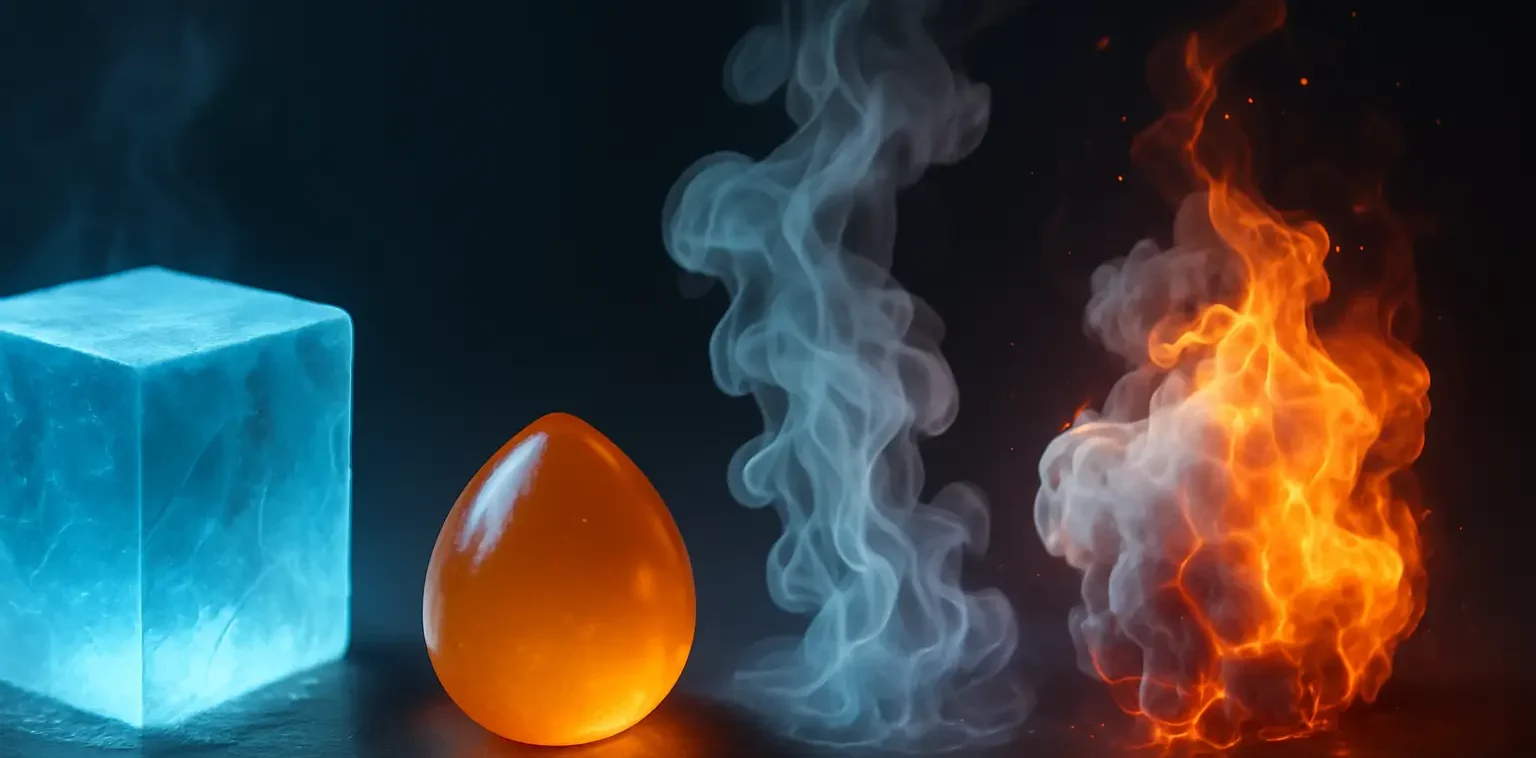- Changes in the state of matter occur when energy is added to or removed from a substance, causing its particles to rearrange and transition between solid, liquid, and gas phases.
- These transitions include:
1. Melting as Changes in the State of Matter:
- Solid to liquid.
- Occurs when a solid absorbs heat, causing its particles to vibrate more until they break free from their fixed positions.
- Example: Ice melting into water.
2. Freezing as Changes in the State of Matter:
- Liquid to solid.
- Happens when a liquid loses heat, causing particles to slow down and settle into fixed positions.
- Example: Water freezing into ice.
3. Vaporization:
- Liquid to gas.
- Occurs in two forms: evaporation (surface molecules gain enough energy to become gas) and boiling (entire liquid reaches boiling point).
- Example: Water boiling into steam.
Advertisements
4. Condensation:
- Gas to liquid.
- Gas particles lose energy, slow down, and form a liquid.
- Example: Steam condensing into water droplets.
5. Sublimation:
- Solid to gas without becoming a liquid.
- Example: Dry ice (solid CO₂) turning directly into gas.
6. Deposition:
- Gas to solid without becoming a liquid.
- Example: Frost forming on a cold surface.

